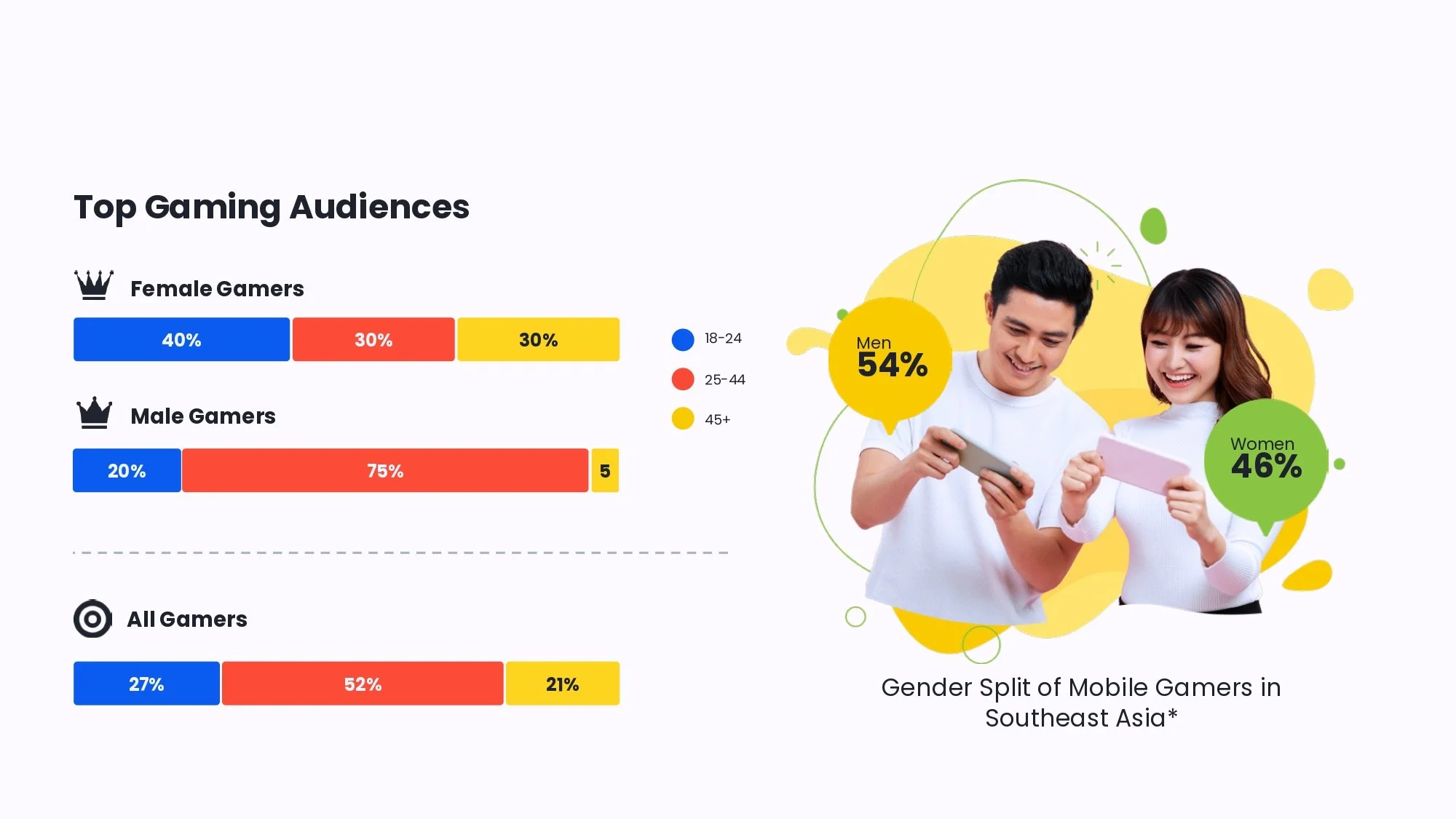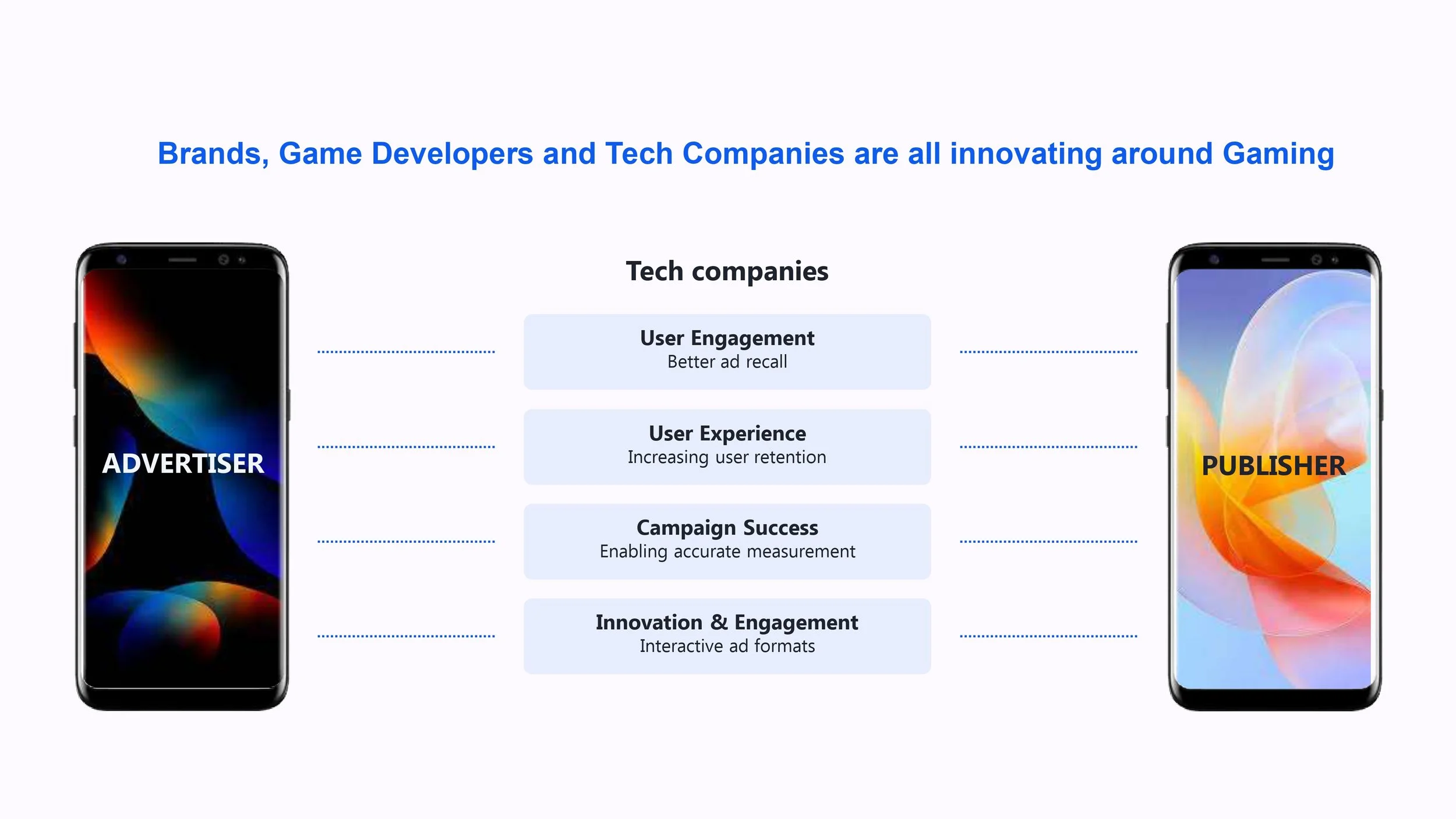How Brands Can Power-up With Mobile Game Advertising
Consumer Insights and Marketing Opportunities
Author: Valentina Lizzi, InMobi | Member IAB SEA+India AdTech & Innovation Regional Council
2 billion.
That’s how many mobile gamers the world saw in 2022. Naturally, this meant that games were the most downloaded app category among Android and iOS users. This is a clear indication of a vast and diverse audience. It’s no surprise that major OTT and social media players today are venturing into gaming, and brands have also begun to take notice.
But is gaming big in mobile-first Asia? Aren’t gamers primarily young and male? How can brands be sure their unique audience is there and measure success? Read on to have these questions answered.
Asia is leading the gaming wave.
Asia represents 50% of the gaming population globally and is projected to have 1.37 billion mobile gamers in 2027!
According to InMobi’s data, 71% of gamers spend between 10 and 30 minutes in a mobile gaming session, showing how it’s a quick getaway from everything they do.
Man or woman, young or old, gaming’s got them sold.
It’s common to think of gamers as boys and men battling it out in their basements. The truth is that gaming is big across genders and ages. According to InMobi’s audience intelligence platform -
46% of Southeast Asian gamers and 43% of Indian gamers are female
52% of Southeast Asian gamers are millennials, and Gen Z and boomers have a near-equal split of 27% and 21%, respectively
48% of Indian female gamers are aged 45+
Indeed, every brand has an audience, as different people can be found playing different games.
Source: InMobi Audience Intelligence Platform, February 2023
Mobile gamers tend to trust and connect with brands on gaming platforms.
Brands can achieve a higher recall and trust via gaming advertising: InMobi has found that 60% of gamers are likely to purchase an advertiser's product, especially among committed gamers.
InMobi has found that high attention-driven ads, such as in-game, can drive 98% viewability and ad recall that spans between 49% and 97%, driving more attention than social media in-feed ads.
Mobile game advertising is soaring.
6 in 10 advertisers have started spending on mobile game advertising after the pandemic, a two-fold increase in spends on seeing engaged audiences, measurable solutions, and increased ROI.
But are mobile game ads safe, effective, and easy?
Worries about gaming advertising exist, but it is essential for brands to learn the truth and take the plunge:
Brand safety is a guarantee:
All brands must do is select the right game genre to find their audience.The media mix only gets richer with games:
Considering the highly engaged and high-intent audiences gamers can be, advertising on games can greatly help a brand achieve its objectives.Measuring ROI is simple:
With completion rates, engagement rates, recall, and eCPMs being great success metrics, brands can easily measure their gaming ads' performance.It’s easy to plug and play:
Many marketers are worried that creating assets for mobile game ads is challenging. However, plenty of plug-and-play solutions are available.
Mobile game advertising brings together brands, developers, and technology partners by prioritizing user experience.
57% of developers believe gaming apps improve retention and do not detract people from their gameplay experience. Of course, the trick is ensuring gamers feel fewer interruptions while making ads part of their gaming journey, thereby enriching the gamer’s experience and delivering performance for advertisers. Technology companies help brands and developers strike this balance by:
Maximising user engagement with great user experience: This means helping brands make their ad experiences more pleasant and less intrusive to improve retention and brand recall.
Innovating with new formats while enabling and measuring campaign success: Interesting interactive formats that feel closer to gamers’ interests, such as blended in-game advertising and playables and measurable metrics are critical for a brand’s success on gaming platforms.
Brands across industries have begun to leverage the power of mobile game advertising. Fashion brands Louis Vuitton and Balenciaga, Coca-Cola’s beverage brand Sprite, food brand Wendy’s, fuel brand Castrol, Unilever’s ice cream brand Paddle Pop, and Inspired Square’s puzzle game 2248 are only a few of the many brands that saw great success with gaming advertising.
So, what does the future look like for gaming advertising?
Let’s be honest, 40% of internet users in the world use ad-blockers and two-thirds of TV viewers ignore TV ads. In this world of ad-skipping and ad-blocking across platforms, gaming platforms stand a chance to engage audiences meaningfully.
Gaming advertising is an example of where advertisers, game developers, and tech companies have understood the importance of a customer-first approach and found a way to overcome these barriers while continuously innovating.




